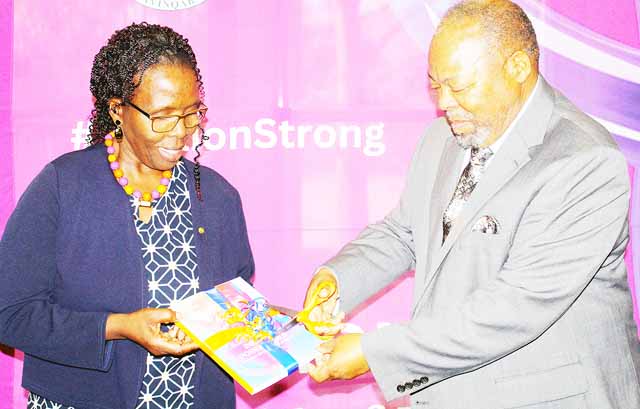By SIBUSISO DLAMINI | 2023-08-04

ABOUT 51 per cent of women in the country lack the power to say no to sex or to decide on contraception and healthcare.
These statistics were shared by the United Nations Population Fund (UNFPA) Head of Office Margaret Thwala-Tembe during the World Population Day commemoration and launch of this year’s state of the world population report at the Happy Valley Hotel yesterday.
This year’s celebration was held under the theme ‘Unleashing the power of gender equality: Uplifting the voices of women and girls to unlock our world’s infinite possibilities.’
“These critical decisions about their lives are often made or influenced by others, whether partners, families, societies or even government,” said Thwala-Tembe.
She said the power to make decisions on one’s body varied by socio-economic status, stating that UNFPA’s national data showed that rural women tend to have fewer choices than other groups of women who are more affluent.
“If we use the case of adolescent fertility, the birth rate among rural adolescent girls stands at 92 births per 1 000 adolescents, while it is 69 births for urban adolescent girls,” she said.
She complained about this, stating that people have the power to make informed choices about whether and when to have children when they could exercise their rights and responsibilities.
“Only then can they navigate risks and become the foundation of more inclusive, adaptable and sustainable societies.”
Coming to the commemoration, she said the day was a reminder that we could still achieve a prosperous, peaceful and sustainable future, adding that the State of World Population Report has two key messages.
population
The first one is that we need to shatter the myths about population, and the other message is that we need to stop asking the wrong question of whether eight billion is about too many or too less.
“The right question instead is that can everyone exercise their fundamental human right to choose the number and spacing of their children?” she asked.
Meanwhile, Minister of Economic Planning and Development, Dr Tambo Gina, said the theme was a reminder to put women and girls at the centre of development.
“Women and girls make up 51 percent of the population, which is enough reason to involve this major population group in decision-making processes on matters that are of significance to their lives,” said Gina.
He re-affirmed government’s commitment to gender equality and women empowerment, which he said was demonstrated through the ratification of a number of regional, continental and international instruments.
The minister said the country embraced the human rights approach to Sexual and Reproductive Health, and as such, its population policy was explicit in terms of enabling citizens to achieve their fertility intentions without coercion.
He added that the policy further outlined government's commitment to increasing access to comprehensive and age-appropriate Sexual and Reproductive Health (SRHR) for young people, to ensure that they have access to accurate information on SRHR-related issues.
“In operationalising the policy, Health provides Sexual and Reproductive Health information and services to enable Emaswati to exercise their rights and choices.”
Gina gave assurances that the ministry was finalising the review of the National Population Policy.
“The review will enhance the relevance and effectiveness of the population policy and ensure that it incorporates emerging issues in keeping with the national and global development agenda on the sustainable development goals.”
The event was also graced by UNAIDS Officer in Charge Dr Betru Tekle Woldesemayat.
share story
Post Your Comments Below

THE recent turn of events at SwaziMed has underscored deep-rooted governance challenges that thre...

Sisonkhe FC ……........….. (0)2
Mpendulo 55th, Thab...
Social media users have reacted with shock and sorrow to the death of former Mhlume Unite...
Health officials have reported a significant decrease in new HIV infections among men, in...
All material © Swazi Observer. Material may not be published or reproduced in any form without prior written permission.
Design by Real Image Internet